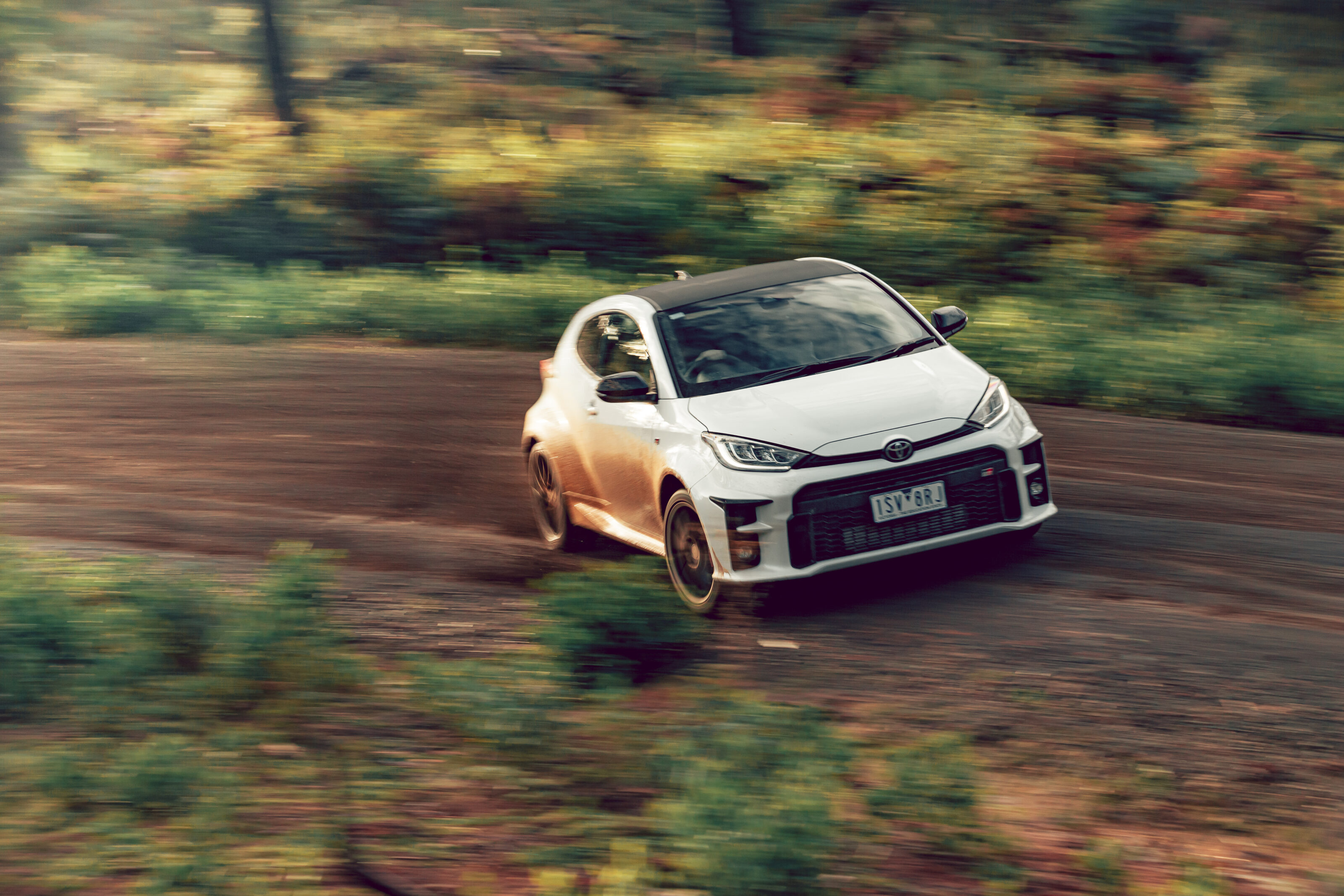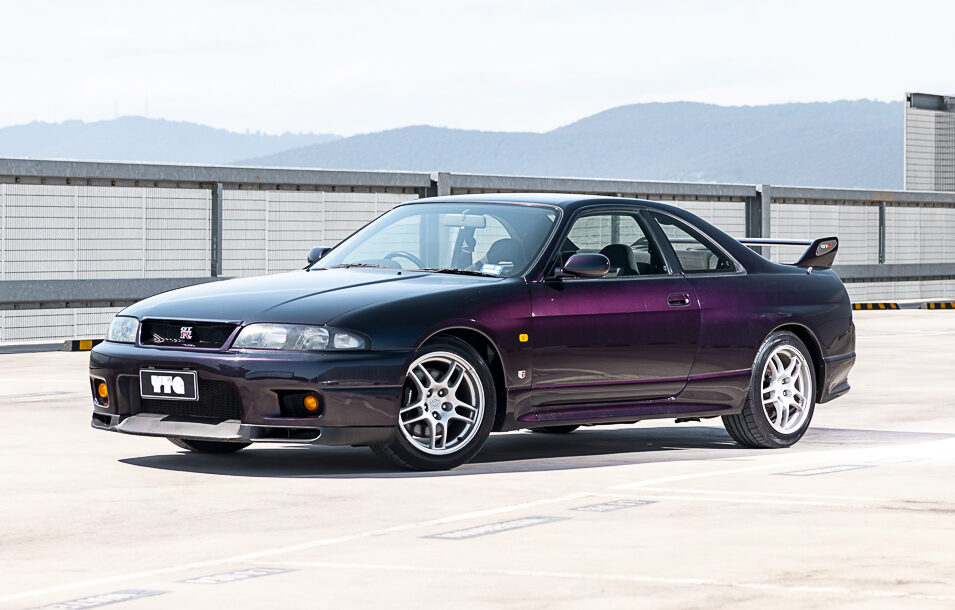Neal Bates has rallied all over the world, so which event do you think is his favourite? Maybe New Zealand’s smooth, conveniently-cambered thoroughfares through lush green hills, or perhaps the challenge of Indonesia’s sweaty, slimy, clay-covered palm plantation roads? What about the challenge of beating the world’s best on Western Australia’s unique ball-bearing gravel during the WRC’s annual trek to Perth?
Nope, the answer is Rally of Melbourne. We’ll let the four-time Australian champion and motorsport hall of famer explain why: “I think the stages but more than anything the surface. It always had good grip and [was] also incredibly smooth.
But you look at the stages, there’s room to enjoy what rallying is all about: throwing the car into a corner, getting on the power and driving through the corner sideways. The stages really suited that style of driving and it was an absolute sprint rally, drive as fast as you can.”

Such a glowing endorsement requires closer investigation, with old rally maps revealing the roads that Bates animatedly describes lie just an hour or so east of Melbourne’s CBD, surrounding the towns of Yarra Glen, Healesville and Marysville.
Our chariot of choice couldn’t be more obvious: the Toyota GR Yaris Rallye is the spiritual successor of the turbocharged, all-wheel drive weapons that helped Bates and his long-time co-driver Coral Taylor fill their trophy cabinets.
Here at Wheels we’ve heaped plenty of praise on the GR Yaris thanks to its stonking 200kW/370Nm 1.6-litre turbo three-cylinder engine, lithe 1280kg kerb weight, snappy six-speed manual and terrific brakes. Well, the Rallye is better in almost every respect.
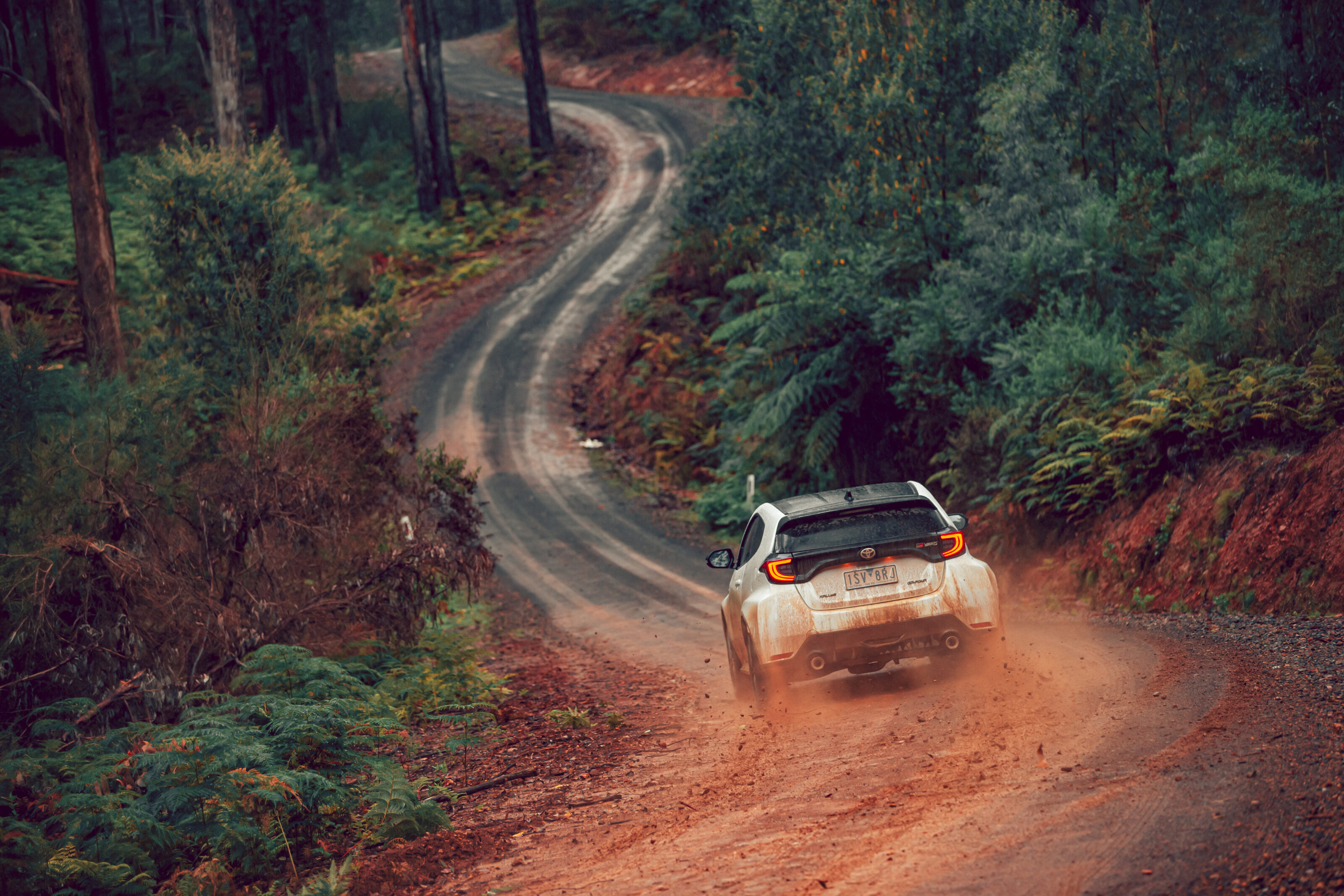
It is, understandably, more expensive. At $54,500 before on-roads, it commands a $5000 premium over the base car but justifies it with lighter forged BBS alloy wheels wrapped in Michelin Pilot Sport 4 S tyres, stiffer suspension bits and a pair of Torsen limited-slip differentials. Think of it as the STi to the base GR’s WRX.
The modifications are the final piece of the GR Yaris puzzle, but can the Rallye fulfil its promise as a true homologation special on the forest roads that made the likes of Bates, Peter ‘Possum’ Bourne, Ed Ordynski and Simon Evans legends of Australian rallying?
Trekking through Melbourne’s eastern suburbs to meet photographer Alastair Brook in our start point of Yarra Glen, the good news is the Rallye is no less liveable than the standard car; there’s no ride penalty and while it would be nice if the seat was mounted a bit lower, you become accustomed to the elevated perch quite quickly.
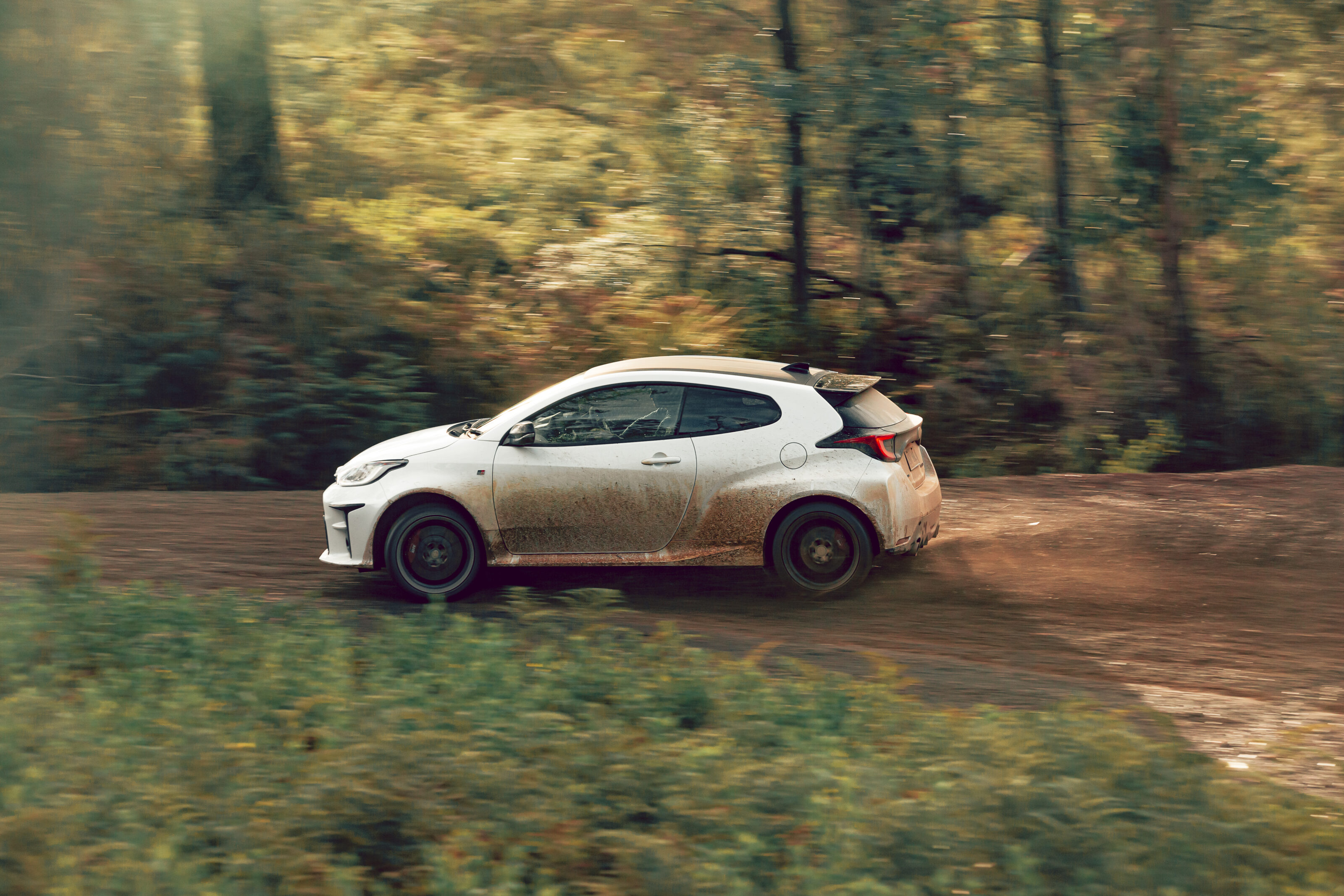
Rally Melbourne often based itself out of the Yarra Glen Showgrounds but crews didn’t have to travel far for their first taste of action. Just up a couple of kilometres directly north of Yarra Glen Steels Creek Road morphs into Mt Slide Road. Yes, the first stage of Rally Melbourne was called Mt Slide.
Not only was it named by a rally enthusiast it was clearly designed by one, too. It’s only short, just seven kilometres in length to the point where it joins the main road, but the fact that it’s less than half that as the crow flies should give you some idea of its sinuous nature.
“Mt Slide was just a magnificent uphill stage where you could throw it around and back it in,” says Bates. Obviously, the need to account for oncoming traffic and road regulations limits the extent of our throwing but Mt Slide is still a pleasure to drive.
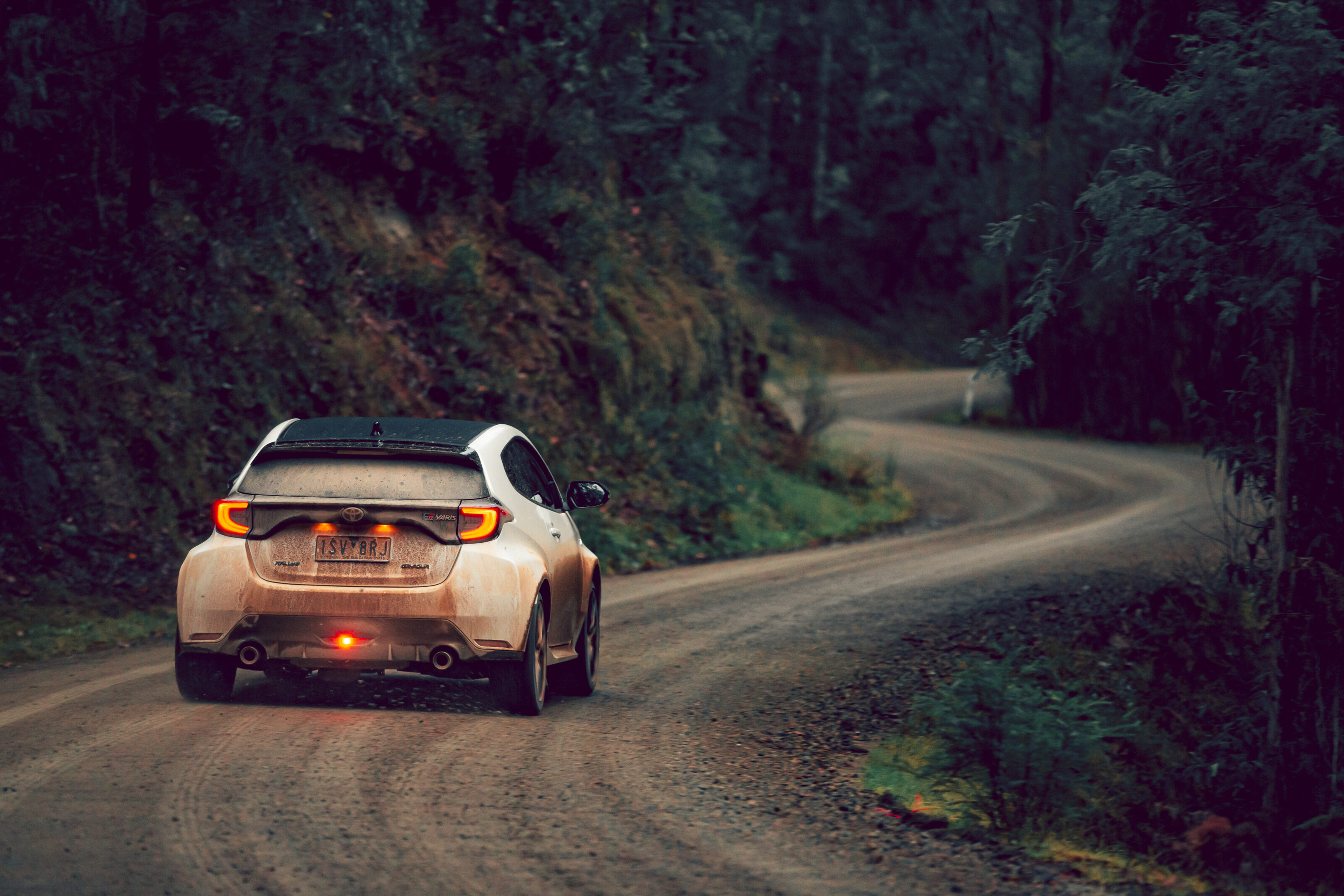
As Bates suggests the surface is smooth and hard packed. The corners are plentiful, a lot of them heavily cambered hairpins of various radii. Straight sections are few and far between, though in car footage suggests that doesn’t stop rally aces from hitting fifth gear in these sections. No thanks.
Having rejoined the black stuff our next stop is just 10km up the Melba Hwy. Great roads are often tucked away out of sight but the epic Marginal Road takes this to a new level.
At 100km/h on the main highway the entrance is literally a blink and you’ll miss it affair; a small gap in the forest, obscured from sight by trees on approach, is the gateway to this absurd 20km+ stretch of gravel road. A sign welcomes us to Toolangi State Forest and a makeshift carpark for trail bike riders is a welcome reminder that others enjoy being in the middle of the nowhere, too.
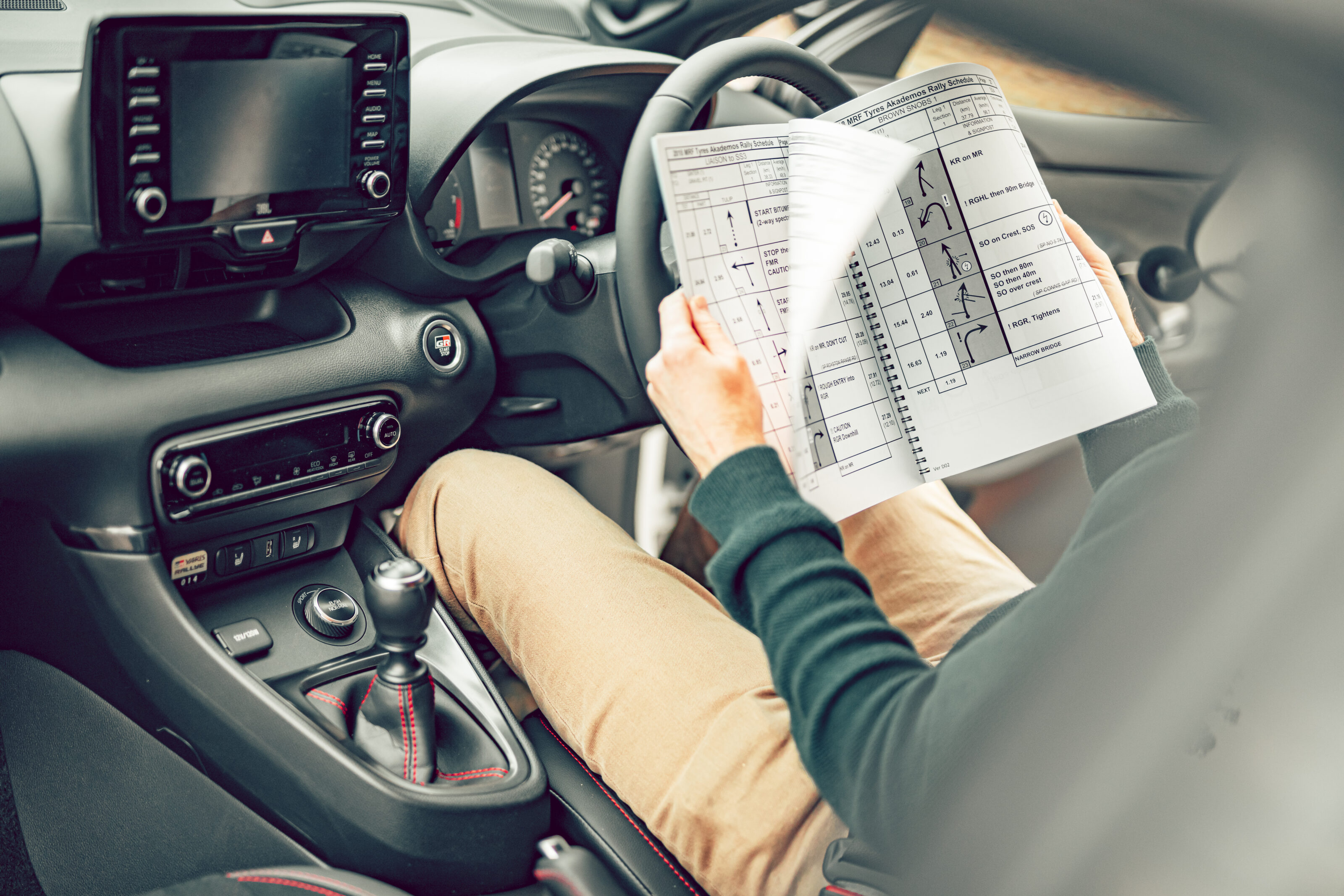
Marginal Road’s length meant it was usually, though not always, split up into two or more stages, but we’re driving it in its entirety. It begins in a similar manner to Mt Slide; a little rougher, slipperier and narrower, but a constant procession of tight turns that continue climbing, climbing, climbing up the side of the hill.
The thick green forest thins as we ascend thanks to recent bushfires leaving the trees blackened and the banks bare. Grip remains strong but random shiny patches frequently undermine any confidence.
Recent heavy rain has allowed water to gather in potholes and on the inside of corners but the Yaris is unperturbed, the Michelins scrabbling as they try to deploy 370Nm to the loose surface on corner exit.

It’s here the Rallye’s limited-slip diffs prove their worth. Where the standard car’s open diffs would spin an unloaded front wheel and drag the nose wide, the Rallye distributes its power evenly across its axles with greater predictability. Toyota’s WRC drivers were brought in to help develop this aspect of the GR Yaris’s handling: “They have huge experience with differentials – it’s their main tuning tool,” Toyota’s European master driver Vic Herman told Wheels at the car’s international launch.
As the road crests the hill it flattens and becomes ultra fast. Sections like this are where rally drivers prove they’re different from mere mortals. The track isn’t straight, instead kinking this way and that, running the gauntlet between banks that reach right to the road’s edge.
In terms of outright speed the Rallye would give little away to front-running rally cars; for years inlet restrictors, usually between 32-34mm, have limited horsepower to around the 300 mark (224kW) so acceleration out of corners is roughly similar, especially as the GR Yaris’s standard gearing is very short.
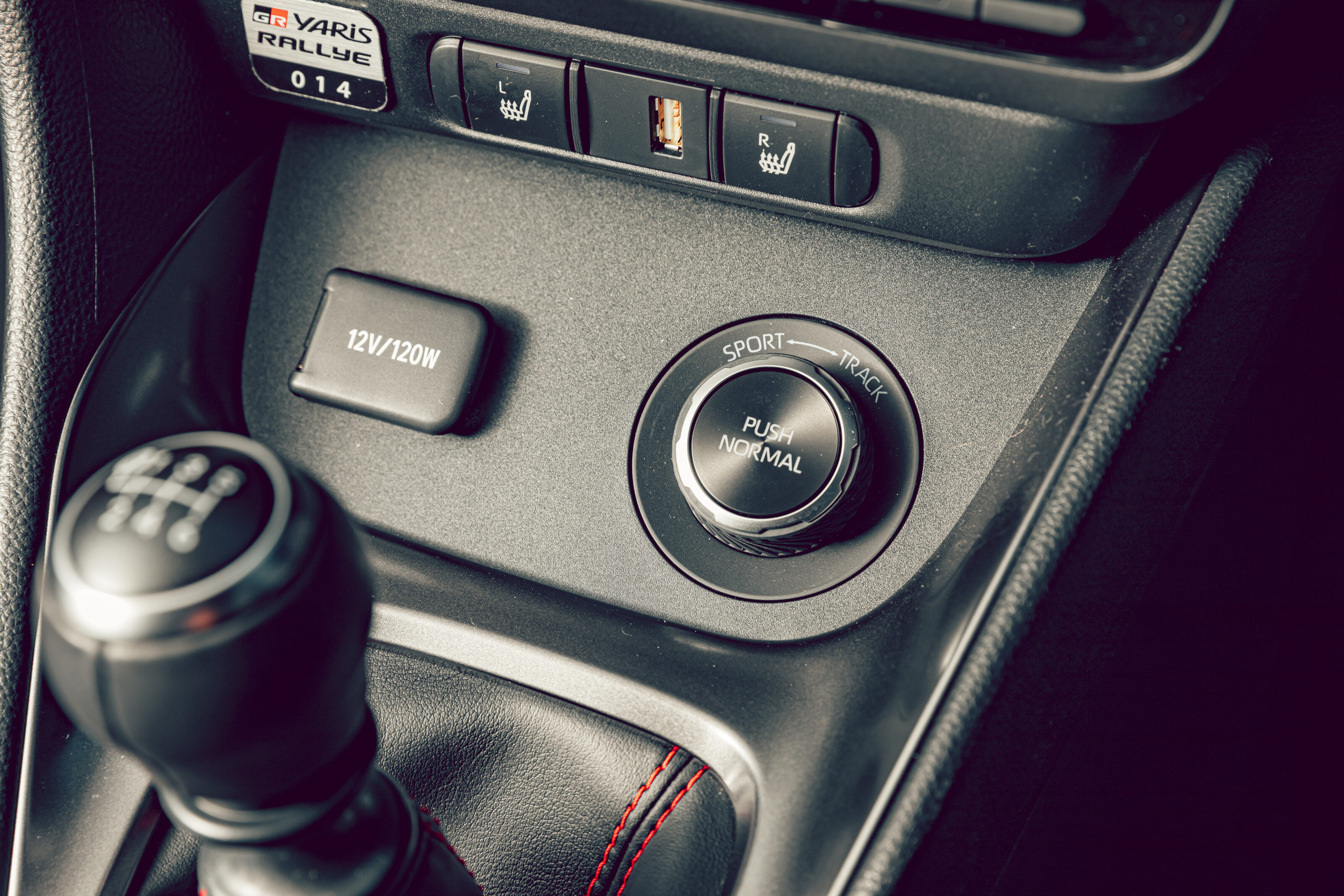
Where the road-going Toyota hot hatch misses out is in terms of grip, particularly under braking. The GR Yaris has monster brakes for a car its size, with 356mm discs at the front and four-piston calipers.
These are bigger than you’ll find on any rally car, their rotor size restricted by the need to use 15-inch rims, but brakes are only as effective as the tyres they’re attempting to slow and on gravel anything more than light pressure triggers the ABS as the road-biased Michelins struggle for purchase.
This is particularly the case on the fresh blue-metal surface that appears as Marginal Road descends. It would be a terrifying material to try and drive quickly on, as even at our reduced speeds the road beneath the wheels is constantly shifting, extending every braking distance and delaying every steering input.

That said, the blue rocks are probably preferable to the wet clay that lies beneath, which experience suggests has all the adhesive qualities of a bar of soap in the bath. The road is also heavily crowned, to the extent that the underbody occasionally scuffs the ground.
Despite the road name remaining the same its nature continues to evolve. The surface improves once more but a couple of huge water splashes (checked for depth prior, of course) bring out my inner five-year old, Alastair requesting multiple runs to capture the rays of sunlight that are penetrating the trees and forming dancing patterns on the sheets of displaced water. Playing rally driver is fun!
An epiphany is also slowly forming. According to the VicRoads website any rural road with no posted limit defaults to 100km/h but triple figures is unachievable on the vast majority of these roads. Typically we’re doing little more than 60-70km/h but there’s always something to react to thanks to the highly varied road surface.
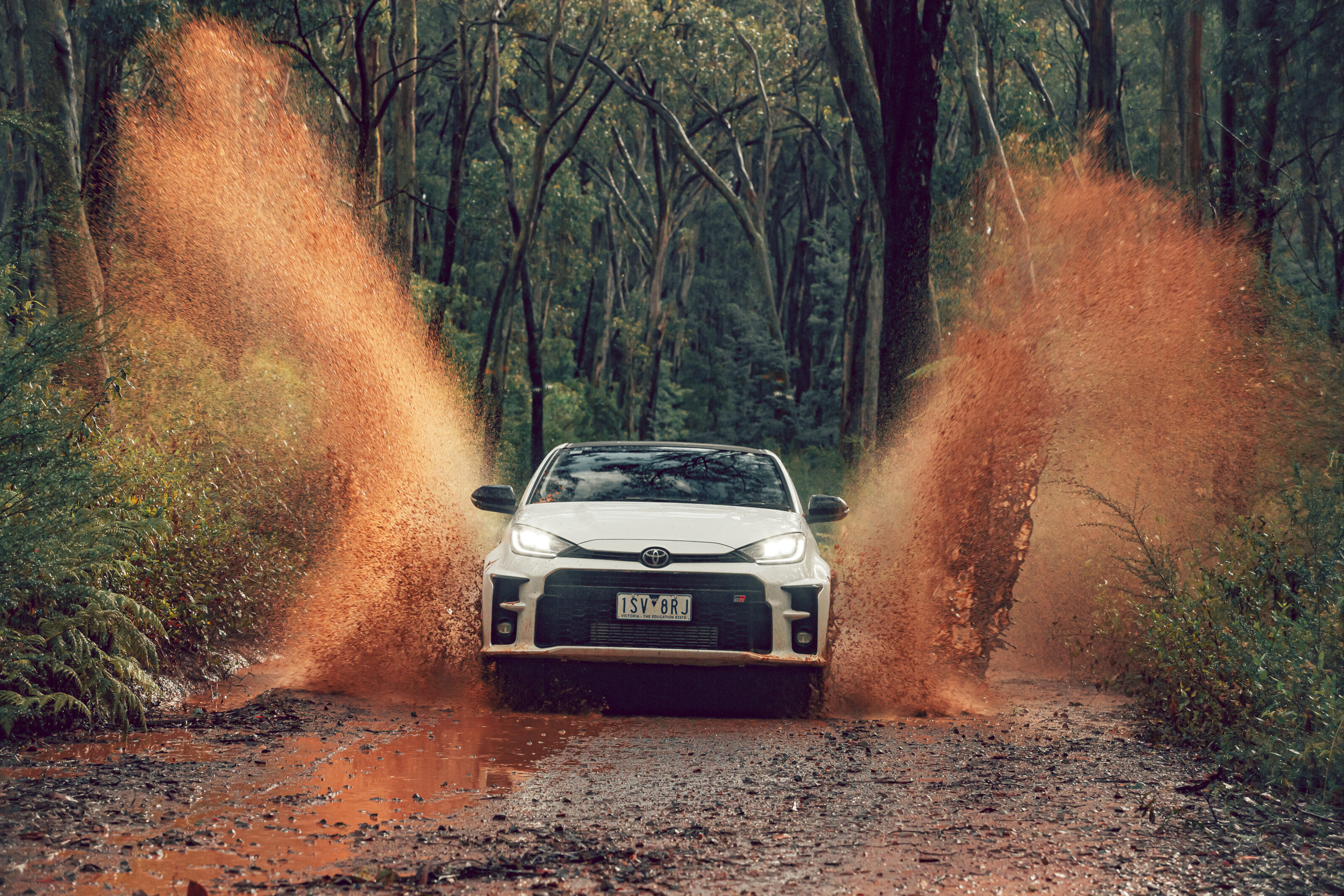
You’ve no doubt read reviews of the Mazda MX-5 or Toyota 86 or Alpine A110 that praise their refreshing lack of grip, allowing the car to feel more involving at sensible speeds. Well, it turns out there’s another way – if you can’t reduce the car’s level of grip, reduce that of the road it’s driving on.
Even at these slower speeds there are traps for the unwary. For around a kilometre the road ducks and dives over enormous mounds of earth like a tree-lined rollercoaster before entering a crossroads. The raised intersection looks innocuous enough but lifts the Yaris clear of the ground, simultaneously stopping my heart.
To be honest it was a pathetic amount of air, the wheels barely leaving terra firma, but at competition speed any crew that didn’t have at least a ‘caution’ in their pace notes may find themselves unexpected occupants of the international space station.
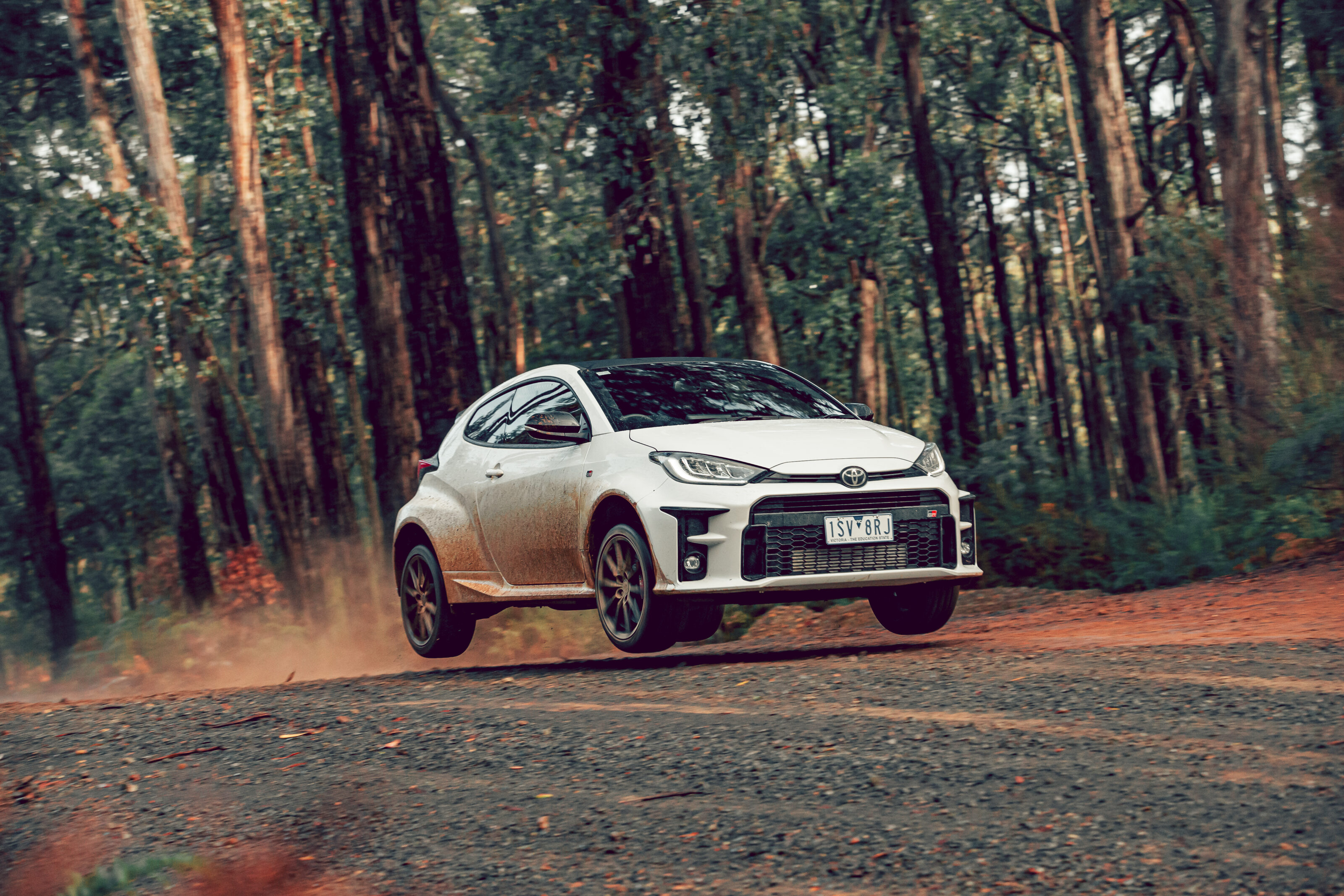
From here there are two route options: continue forward and join Murrindindi Rd, a wide, flat expanse that’s so smooth it would put many tarmac highways to shame, or turn hard right into the ominously titled Mt Despair Rd. We choose the latter, two grippy wheel tracks showing the way through the otherwise treacherously slippery deep gravel, hungry tree stumps situated on the apex of each corner ready to eat the inside wheels of the inaccurate.
The road is constantly changing but like Bates said the one constant is the hard-packed surface. Aside from the odd large rock there’s nothing to trouble the Rallye, even on its low-profile Michelins.
Having exited the forest, in a real rally we’d return to lunchtime service to change tyres and effect any repairs but today the only thing needing fuel is Alastair and I. Between us and our next stage is Myers Creek Road and the Black Spur, driving destinations in their own right but today relegated to mere transport.

Nevertheless, it’s refreshing to have (relatively) consistent grip under the Toyota’s tyres for the first time today and the Rallye proves agile, grippy and very, very quick on these narrow, slippery back roads.
Just prior to entering Marysville we once again veer into the forest and immediately hit Paradise Plains Road. Driving Paradise Road would be a more apt title as if you’re a fan of slippery surface racing then this is the kind of road you/I/we dream about. Yeh, weird, I know.
Wide, fast and open with clear lines of sight– for as far as the encroaching fog allows, anyway – with stages like this it’s easy to see why Bates, among others, loved Rally of Melbourne. It’s like a gravel grand prix.
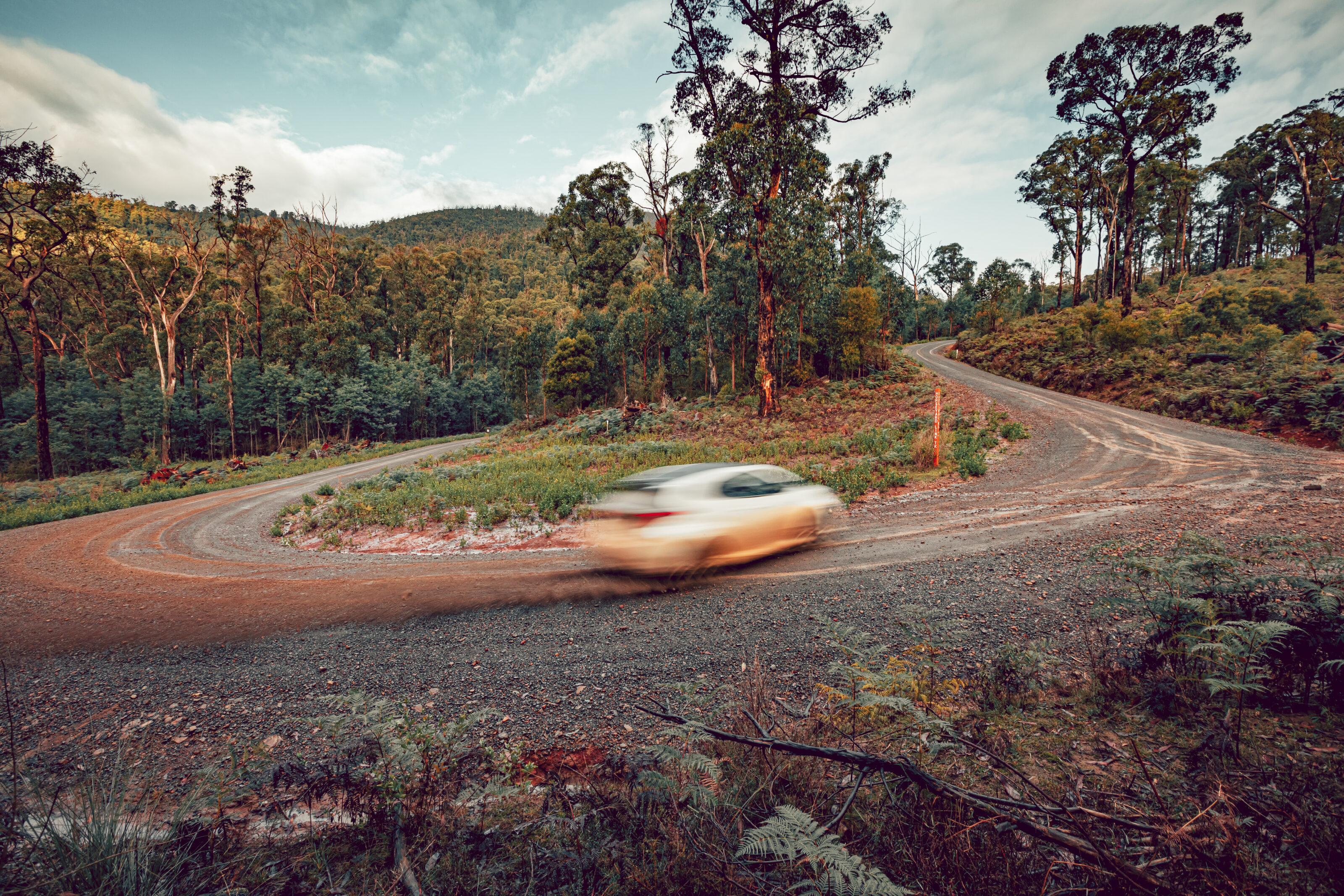
It’s a slightly sad state of affairs that 15-20 year-old Subarus and Mitsubishis still dominate state and even national rallies, as it’s a sign that no suitable production-based vehicle has appeared in the interim to become the rally weapon of choice. The GR Yaris Rallye may very well be that car; it just feels so comfortable in these surroundings.
My mind is whirring, figuring out how much (sadly theoretical) money would be required to turn Toyota’s hot hatch into a competitive rally car. In the grand scheme of things, not much: safety equipment, some underbody protection and a set of tyres would leave you with a very capable machine, judging by the grip and poise it has on these gnarly forest roads.
Be careful, though. Like a siren luring a weak-willed sailor, Paradise Plains is ready to ensnare any driver who drops their guard, with random patches of deep slush making the steering go light as all grip disappears.
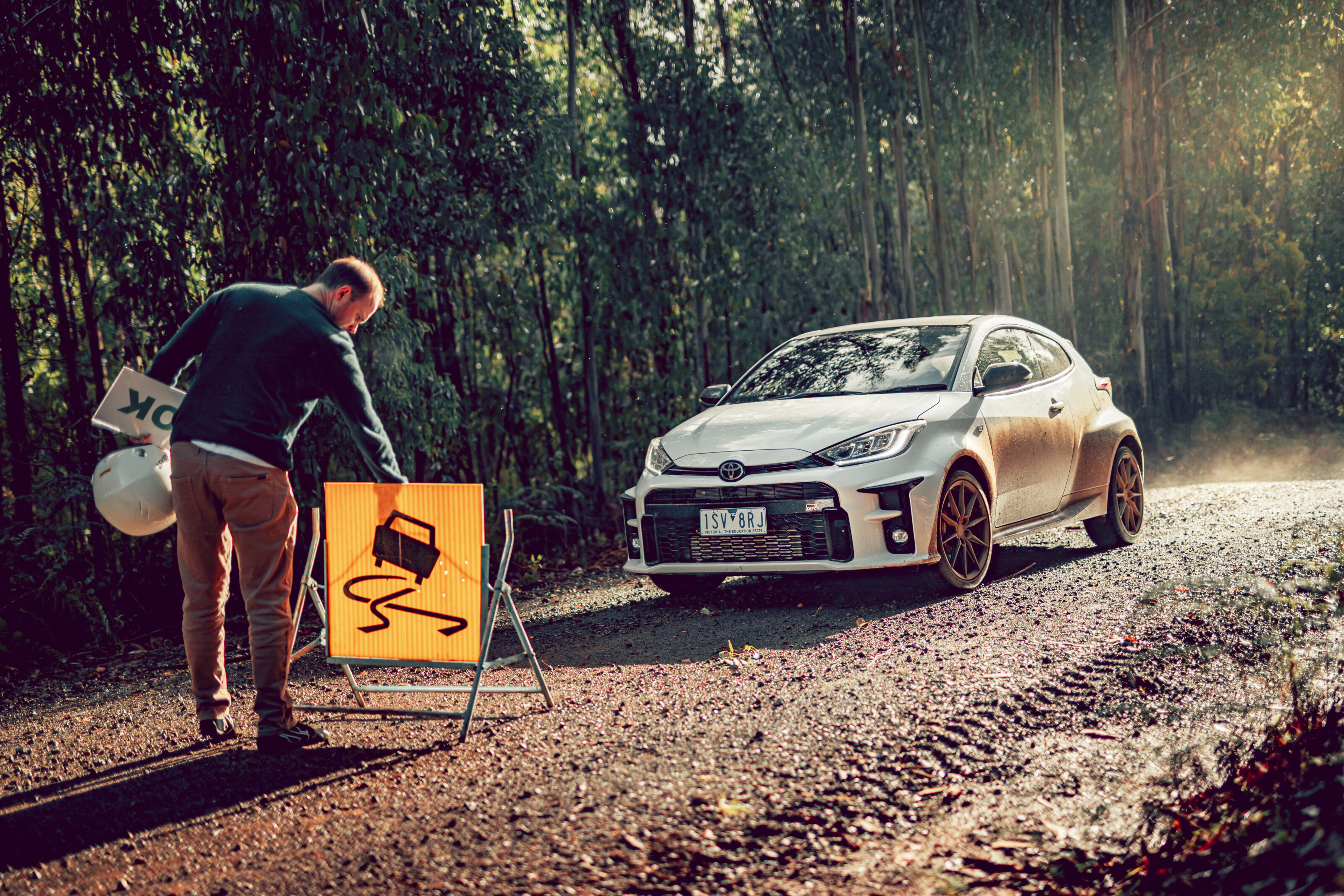
These patches become more frequent as a dusting of white begins to cover the landscape, like liberally applied icing sugar – snow. Victoria’s infamously capricious weather was often a feature of Rally of Melbourne: “We did it one year when it was quite heavy snow,” remembers Bates, “other years were incredibly dusty. There was a variation, but even when it was wet it still had incredibly good grip.”
Over the years Bates drove a wide variety of rally cars at Rally of Melbourne, despite being completely loyal to the Toyota brand – production-based Celica GT-Fours, screaming, naturally-aspirated Corolla S2000, homegrown Corolla GT-Four – but picking a favourite is easy: “My favourite car to drive, it would be crazy not to be, was the [Corolla] World Rally Car.”
And nowhere did he enjoy driving it more than on Acheron Way. “The two favourite stages would be Mt Slide and Acheron Way, just from the pure enjoyment of it. Acheron Way is incredibly flowing but a little bit technical.” Look on the Australian Rally Championship Facebook page and you’ll find Bates’ onboard footage from 2001 featuring his favourite car on his favourite stage.

The footage doesn’t tally with the road I’m driving. Acheron Way is narrow and blind and full of tight turns with unforgiving undergrowth on both sides – where there isn’t steep drop-offs, anyway – and yet the scenery is a blur for Bates as he flicks the car from corner to corner, Coral Taylor calmly describing the road ahead. It’s both awe-inspiring and rather terrifying.
Bates crashed that morning but would fix the car and win the afternoon heat, while his Kiwi rival, Possum Bourne, had a terrifying accident in deep snow on the Ben Cairn stage, a road so precarious hang gliders use it as a launch pad.
I put it to Bates that his greatest win, however, came the year before in 2000. It was the true golden era of Australian rallying, with both Bates and Bourne in World Rally Cars, and in the morning heat the two were separated by just 17 seconds (in Neal’s favour) after 90.64km.
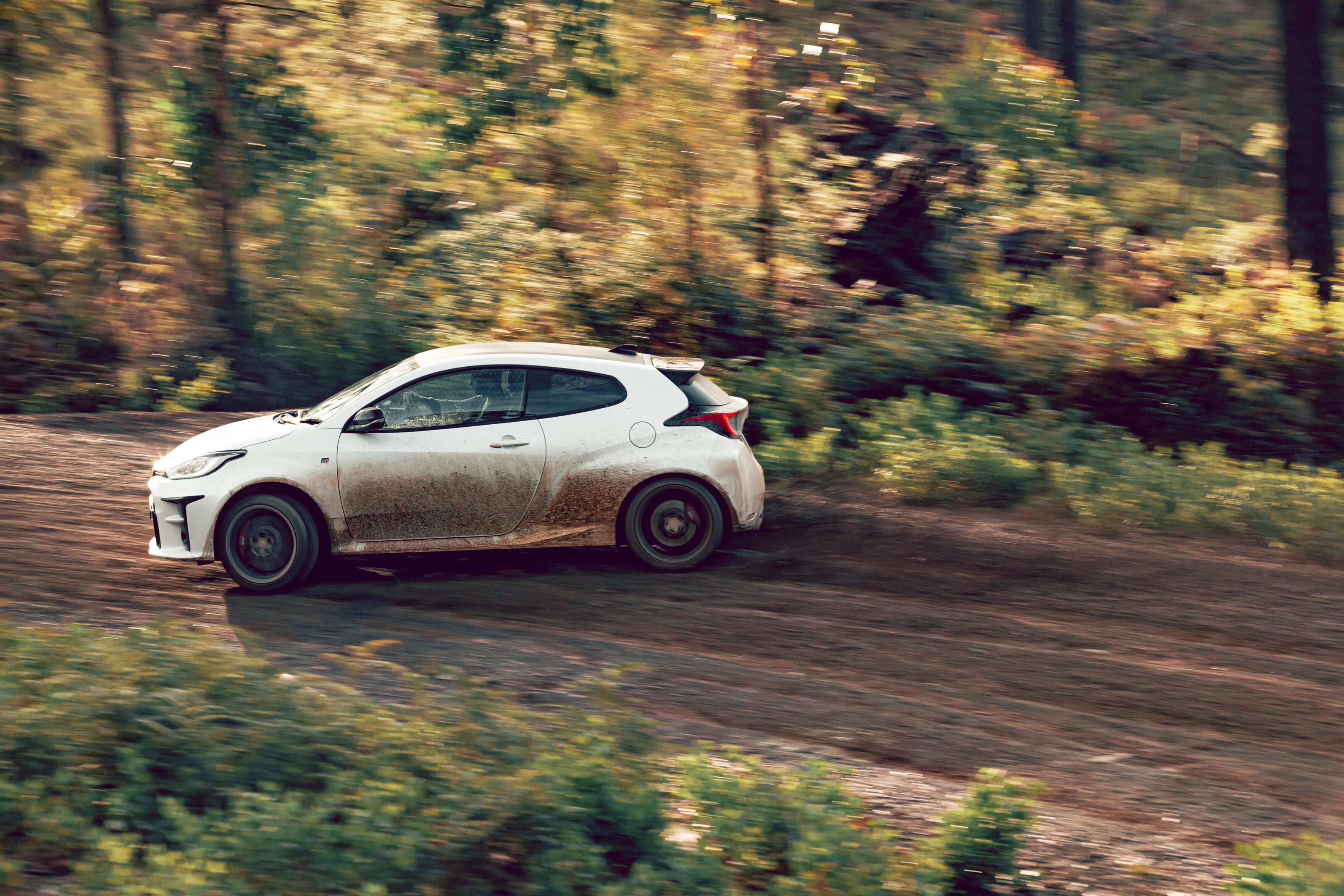
Those same 90.64km – many of which we’ve driven in this feature – were repeated in the afternoon and Bates’s winning margin was three seconds. Three. Through thousands of corners, hundreds of braking and acceleration zones, these two drivers at the top of their game were separated by 0.03sec/kilometre.
Bates, though, disagrees: “My best memory of Rally of Melbourne was the first time Possum ever ran in 1993 and it was the first rally I did with Coral. We had our ST185 [Celica GT-Four) that we’d built ourselves and he came with the Prodrive-built [Subaru] Legacy and we actually beat him. I remember driving through the service area and everyone was standing out on the road clapping. Everyone drove incredibly hard because of the nature of the roads: the grip level, the width of the road, it was on-the-edge, flat-out sprint rallying which is what I love.”
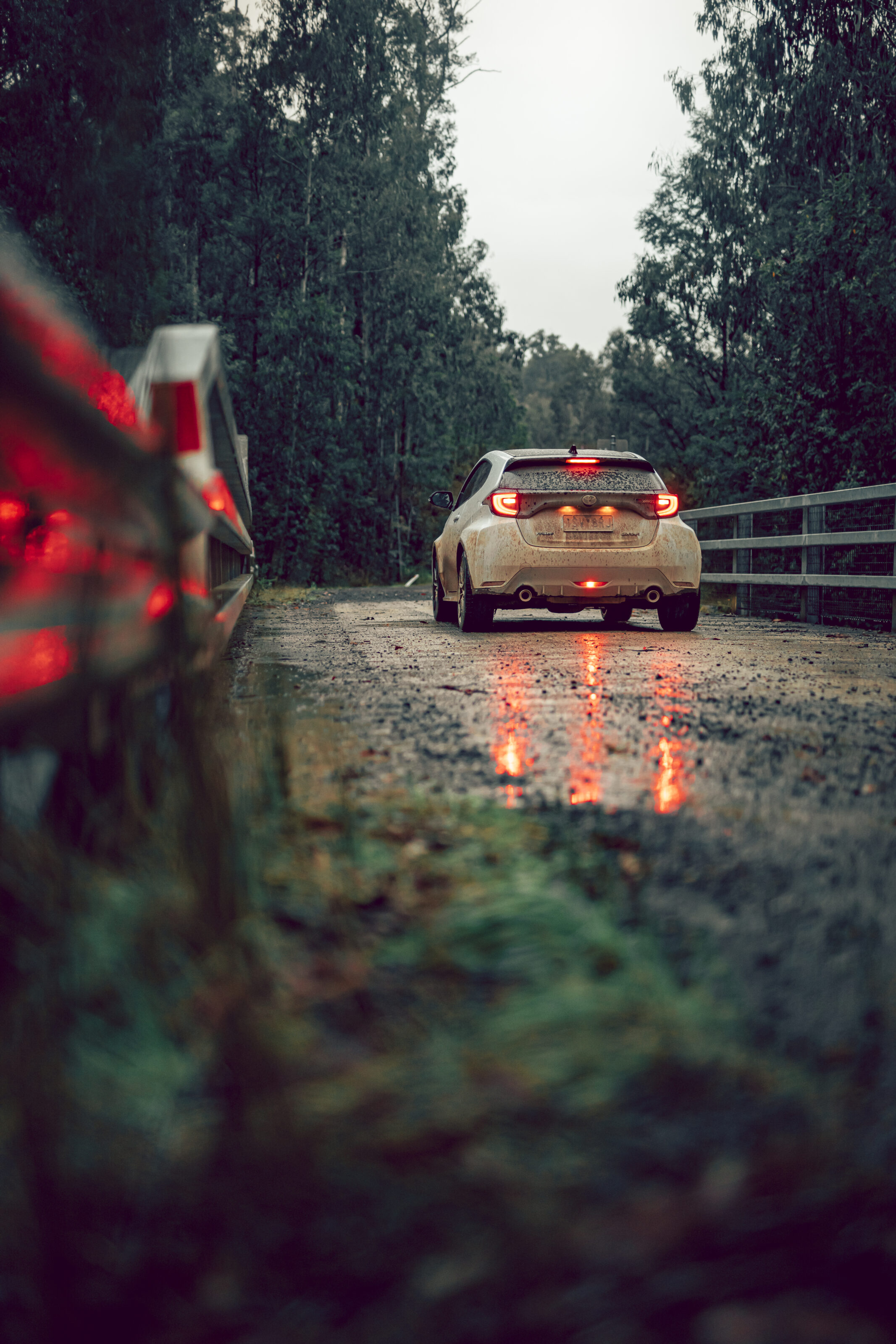
The roads, then, are a winner, but what of the Toyota GR Yaris Rallye? Is it a worthy successor to Toyota’s turbo titans that came before it, a true homologation special? Absolutely.
The proof comes in the fact that I’ve now spent quite a lot of time in both the base GR Yaris and this Rallye version on road and track and at no point have I enjoyed it more than I have today. It feels perfectly at home being punted through a forest and for a car called Rallye there’s really no higher praise.
Toyota GR Yaris Specifications


